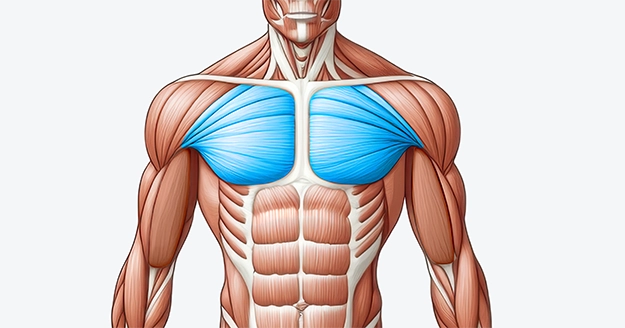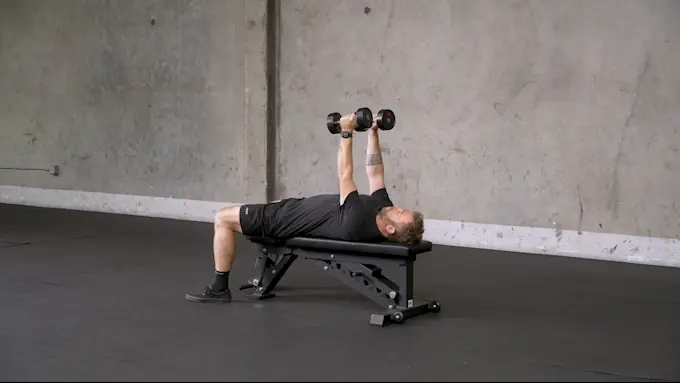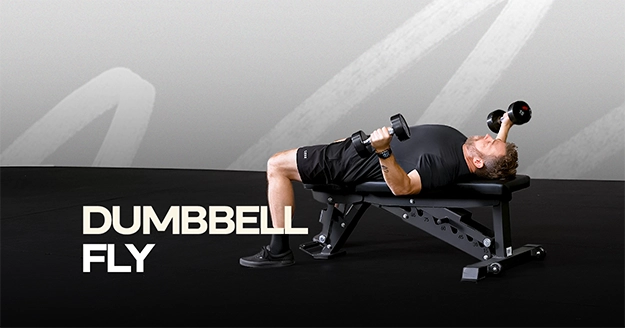Exercise Profile
Dumbbell Fly Overview
The dumbbell fly is a traditional bodybuilding exercise aimed at isolating the chest for aesthetic enhancement. While this movement can contribute to a stronger bench press, it is not usually considered to improve overall performance. Proper dumbbell fly form is essential for maximizing its benefits and minimizing injury risk.
All fitness levels can benefit from the dumbbell fly. Novices can perfect their technique with light weights and intermediates, and advanced lifters can increase intensity through heavier weights and challenging variations. It can also be modified for specialized populations, such as those with shoulder injuries.
The nature of the dumbbell fly exercise allows for higher repetition ranges, which can improve muscular endurance alongside hypertrophy. The pectoralis major is the primary muscle worked during dumbbell fly, with some minor engagement from the shoulders.

Dumbbell Fly Instructions
Step 1: Sit at the edge of a flat bench with a dumbbell in each hand and on top of your thighs. Kick your legs up, lay your back on the bench, and extend your arms toward the ceiling. Keep your spine neutral and your chest high.
Step 2: With your elbows slightly bent, lower your arms in a broad arc to the sides until your upper arms are about parallel to the floor.
Step 3: Squeeze your chest muscles as you bring the dumbbells together, then reverse your motion until the dumbbells are back in the initial position.

Common Dumbbell Fly Variations
The dumbbell fly is a highly adaptable exercise that may be altered to target various chest regions and enhance overall pec muscle development. Here are some common variations of the dumbbell fly, each offering unique benefits:
Dumbbell Fly Tips
- Avoid gripping the dumbbell handles too tightly, as this can overwork your forearms and biceps, leading to less activation of your chest muscles.
- To keep the targeted muscles tense throughout each repetition, avoid letting the dumbbells contact or clang together at peak contraction.
- Keep a slight bend in your elbows, and don’t lower the weights to the point where you feel pain or pressure in the front of your shoulder.
Dumbbell Fly Common Mistakes
- Inconsistent Tension: Dropping the weight too fast or losing control at the bottom reduces tension in the chest.
- Lifting the Head Off the Bench: Raising your head can strain the neck and disrupt form.
- Incorrect Bench Angle: Using an incline or decline that is too steep shifts the emphasis away from the chest and toward the shoulders.
Frequently Asked Questions
Is a flat or incline bench better for dumbbell flies?
Both have benefits: flat bench flies target the middle chest. In contrast, inclined bench flies highlight the upper chest. Incorporating both can help with balanced chest development.
Can I do dumbbell flies on the floor?
Yes, floor dumbbell flies are a great option for beginners or those with shoulder concerns, as they limit the range of motion and reduce shoulder strain.
How can I make dumbbell flies more challenging?
You can increase weight, slow the tempo, or add variations like incline or decline flies for a greater challenge. If you’re looking for a comprehensive guide on how to do a dumbbell fly, refer to the instructions above.
Post your post-workout selfies in IG and tag @trainestapp, #trainest, or DM them to us to get a shoutout on Trainest Stories!


